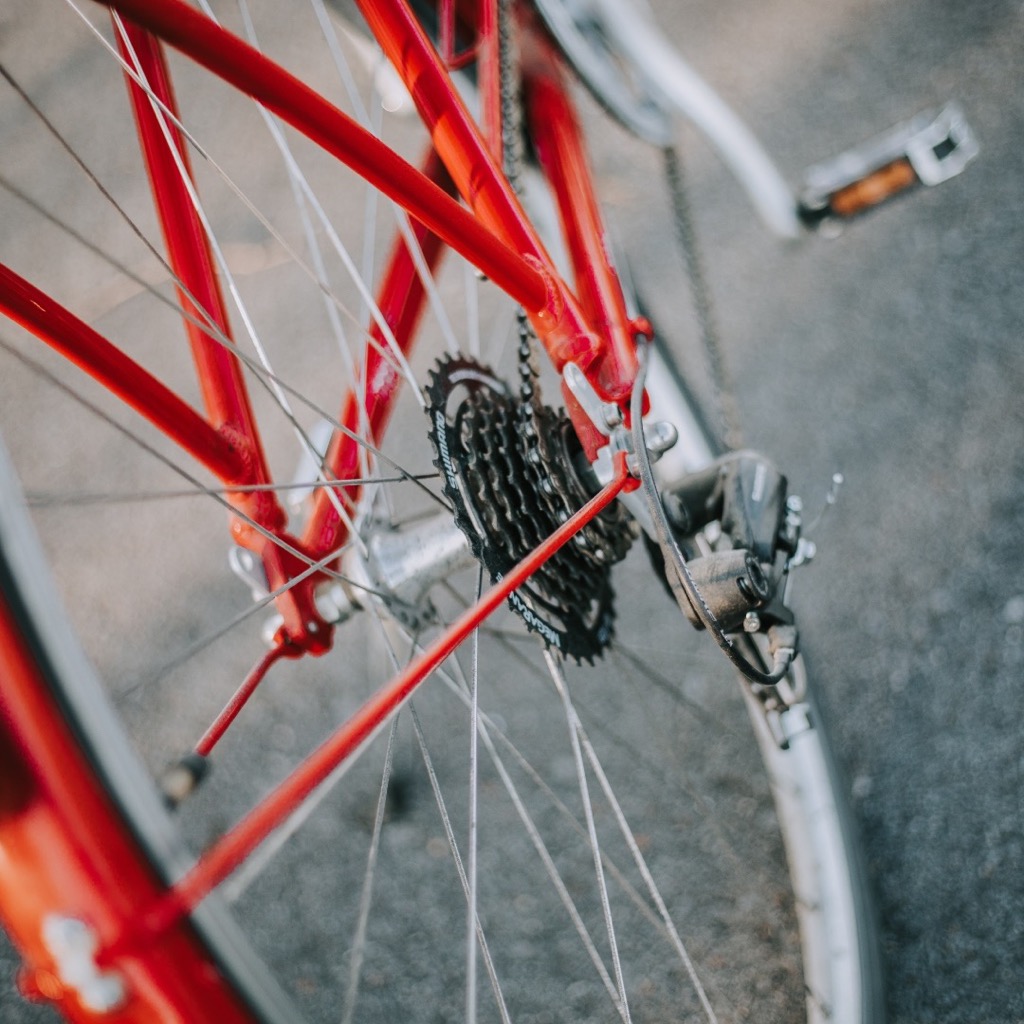Biking (Cycling): Get Fit and Stay Sane

Just getting back on the bike due to the various shelter-in-place orders? That’s great! The bike is a great way to get around, get fit, and stay sane. That said, you may also experience some discomfort if it has been a while since you have ridden regularly. Not to worry though, we have some thoughts on how to reduce or eliminate the two most common forms of discomfort for recreational cyclists.
- Back pain
- Typically presents as low back pain
- Knee pain
- Typically presents as patellar tendonitis – pain at the front of the knee
Before we get into some specifics on what you can do to reduce or eliminate, cycling-related back and knee pain the first thing you should check is your bike fit. While there are professional bike fitters out there, and you should go see one if you are logging hundreds or thousands of miles a year on your bike, the recreational cyclist can do a quick at-home check that will likely reduce or eliminate a lot of on-bike pain.
Bike Fit
When your pedal is at the 6 o’clock position (i.e. the bottom of the pedal stroke) your knee should be at approximately a 25 – 35-degree angle.
What I observe quite a lot of when I see recreational cyclists out on the road or the trail is that most people have their saddle height set way too low. If your saddle height is too low then your knee will not be at a 25-degree angle when your pedal is at the 6 o’clock position. This bicycle fit issue will cause discomfort on the bike and can lead to back and/or knee pain. (Note: this assumes you have a bicycle that is the right size for you to begin with. If you are riding a bike that is too large or too small for you then you’ll have to get a new bike to ensure comfort.)
Back Pain
You may find that if you are increasing your cycling volume from very little (or zero) to, well, more, that back pain follows. One way to reduce or even eliminate this back pain is to start relying more on your glutes and hamstrings. Often times people just getting back into cycling will leverage the muscles in their (low) back area to turn the pedals which can overload those muscles. If you can recruit your glutes and hamstrings into the pedal stroke not only will you find you can ride longer with more comfort you will also find that you have reduced, or eliminated, your back pain.
Knee Pain
Knee pain is another common issue that arises as cycling volume increases. In particular, people usually experience patellar tendonitis (pain at the front of the knee) due to the quad-dominant nature of cycling. Loaded eccentric exercises can help reduce, or eliminate, knee pain when they are done with proper form.
I hope this helps you ride pain-free and that you continue to ride even after this pandemic subsides. Cycling is a great sport and a fun way to stay fit and explore your world.
-Eric Olson, COO (and cyclist)
Try these great exercises to better your ride:
- KB Deadlifts: Help promote the transition from a flexed hip to an extending one, like at the top of the pedal stroke. Video Demo
- Single-Leg RDL’s: Help with eccentric hamstring and glute activation, and also improve balance and core activation which will decrease sway on the bike.Video Demo
- Lateral Stepping: Strengthens the hip abductors, activating glutes in a different plane and getting the glute med firing.Video Demo
⠀⠀⠀⠀⠀⠀⠀⠀⠀⠀⠀⠀
-Melissa Luety, PT, DPT⠀⠀⠀⠀⠀⠀⠀⠀⠀⠀⠀⠀